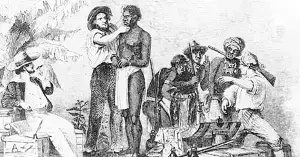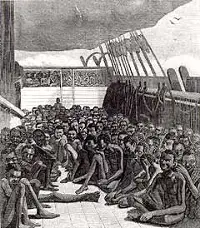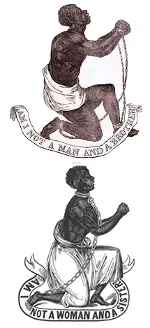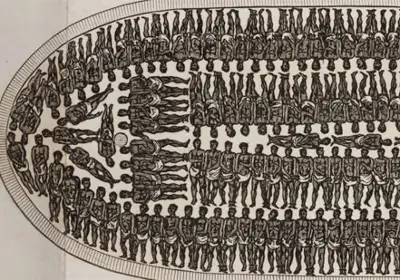Slavery in America
Slavery in America began with the arrival of a ship to the Virginia colony in 1619 and ended with the ratification of the 13th Amendment in 1865. For more than 200 years, millions of people were forced to work in bondage with very few rights, in a system protected by state and federal laws. The question of whether to sanction slavery in America's growing list of newly acquired territories resulted in endless debates and exchanges of fiery words and actions that eventually tore the country apart in Civil War. In the end, a change to the federal law of the land resulted in the end of slavery across the country.  The White Lion, a Dutch trading ship, arrived at Point Comfort on Virginia's James River on August 20, 1619. It left behind nearly two dozen West Africans who would become the first slaves in North America. Not long afterward, the Treasurer, an English ship, arrived, with more slaves for trade. It wasn't long before the number of enslaved Africans increased dramatically. These people were thought of as a commodity, to be traded for things, like money or goods. The slave trade made up one part of the Triangular Trade that existed between Great Britain and its North American colonies in the centuries between the establishment of the Jamestown colony and the Revolutionary War. After the American victory in that war, traders in the new nation the United States carried on the slave trade. Slave trade At first, Europeans who engaged in the slave trade used cargo ships to transport enslaved people. It wasn't long, however, until Europeans built ships designed to carry slaves. Cargo and other smaller ships could transport a few dozen slaves; purpose-built slave ships could carry several hundred. Estimates are that as many as 12.5 million people were enslaved in Africa and sent across the Atlantic Ocean, through the dreaded Middle Passage, to the New World. At its height, in the mid-18th Century, the slave trade transported more than 80,000 Africans a year to the New World. The highest percentage of these enslaved people ended up in the Caribbean islands; slightly fewer went to Brazil; not one-quarter of all of those enslaved went to Spanish possessions in North and South America; and the smallest percentage went to British America and the United States. Conservative estimates are that as many as 15 percent of those who were forced aboard such ships did not survive the journey. Many more survived, however, and were forced to work long hours in all weather so that their "owners" could make money. 
Not all slave ships confined their "cargo" to belowdeck. Some slaves stayed on deck during the journey, often performing tasks to assist or replace the crew. They were chained at various times during the journey–sometimes with wrist manacles, sometimes with leg shackles, and sometimes with both. It was the goal of slave traders to deliver living slaves, so the victims were given food, often just enough to stay alive. Slaves were also often made to dance or do some form of exercise in the sometimes short amount of time that they had on deck. A ship's captain and crew kept slaves in line by keeping them in chains and, at other times, brandishing guns and other weapons. Discipline was harsh, and the slightest infractions were punished by beatings and, in the case of women, other kinds of physical attacks. Enslaved people who arrived in North America were sometimes already allocated to a particular slave owner. If that was the case, then the slaves would go straight to that owner and start following orders–working the land, cleaning the house, looking after the children–whatever the owner commanded. Some slaves arrived and were taken to a slave market, there to be exhibited, for potential owners to see, handle, and then buy. Next page > Plantations and Codes > Page 1, 2, 3 |
|
Social Studies for Kids
copyright 2002–2024
David White




 Slavery was
Slavery was 
